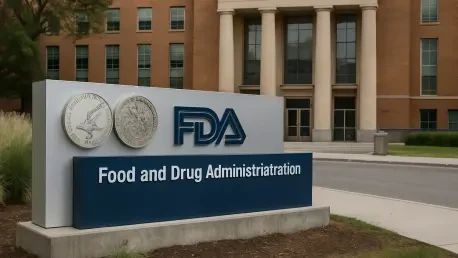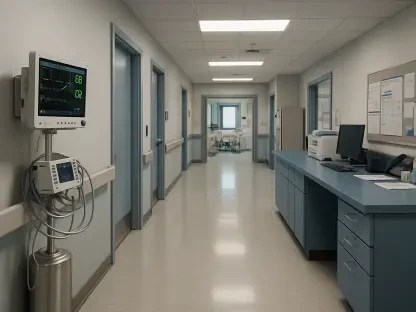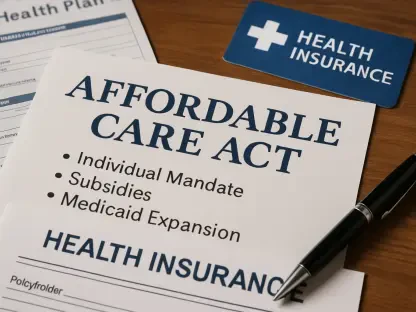In a striking turn of events, the U.S. government shutdown has brought the Food and Drug Administration (FDA) to a critical juncture, forcing the agency to suspend the acceptance of new drug and medical device submissions. This operational halt, triggered by a lack of federal funding, comes at a time when the FDA is already grappling with internal challenges like workforce reductions and leadership transitions. While the agency plans to retain a significant portion of its staff to manage existing reviews, the broader implications of this shutdown raise serious questions about public health and industry innovation. The inability to process new applications could delay life-saving treatments from reaching the market, while scaled-back oversight of food safety and compounded drugs might pose risks if the budget impasse persists. As political gridlock continues to stall federal operations, the FDA’s predicament serves as a stark reminder of how deeply policy disputes can impact essential regulatory functions.
Immediate Operational Impacts on the FDA
The government shutdown has imposed immediate constraints on the FDA, with the agency announcing a pause on accepting new drug and medical device submissions. Despite this, a substantial 86% of its workforce, totaling around 13,872 employees, will remain active to handle ongoing reviews funded by user fees. However, non-critical activities, such as certain food safety inspections and oversight of compounded drugs, are being curtailed unless they directly threaten human life. This strategic prioritization aims to safeguard essential services amid limited resources, but it inevitably leaves gaps in regulatory coverage. The decision to focus on existing applications reflects a calculated effort to minimize disruption for stakeholders already in the pipeline, yet it casts a shadow over new entrants hoping to bring innovative solutions to market. As the shutdown drags on, these operational adjustments could strain the agency’s ability to maintain its core mission of protecting public health while fostering medical advancements.
Beyond the suspension of new submissions, the FDA’s scaled-back operations highlight a delicate balancing act between maintaining critical functions and managing reduced capacity. Routine regulatory tasks, including some inspections and compliance checks, are being deferred, which could lead to undetected issues in areas like food safety if the funding lapse extends. The agency’s focus on user-fee-funded reviews ensures that previously submitted applications for drugs and devices continue to progress, albeit potentially at a slower pace due to resource constraints. This approach, while pragmatic, underscores the vulnerability of non-essential programs during fiscal crises. Industry stakeholders, particularly smaller companies reliant on timely approvals, may face significant setbacks as their submissions remain in limbo. The broader concern lies in how these immediate operational shifts could ripple through the healthcare ecosystem, affecting everything from patient access to new therapies to market competition, should the political standoff persist without resolution.
Long-Term Risks and Industry Concerns
A prolonged government shutdown poses substantial risks to the FDA’s ability to fulfill its mandate, potentially disrupting research funding, health insurance negotiations, and the approval of groundbreaking medical products. While a brief funding lapse of a few days or even a week might have minimal impact on public health, an extended budget deadlock between political factions could create far-reaching consequences. Delays in bringing new drugs and devices to market might stifle innovation, particularly for conditions awaiting novel treatments. Additionally, the curtailment of oversight in areas like compounded drugs could heighten safety risks if issues go unaddressed for too long. Analysts warn that such disruptions could alter market dynamics, with larger pharmaceutical companies potentially weathering the storm better than smaller firms lacking the resources to endure prolonged delays. The uncertainty surrounding the shutdown’s duration only amplifies these concerns within the healthcare sector.
Compounding the long-term risks is the FDA’s already diminished capacity, a result of prior workforce reductions and leadership turnover. Staffing levels during this shutdown are notably lower compared to past contingency plans, reflecting earlier job cuts that have thinned the agency’s expertise. While some analysts suggest that these reductions might lessen the impact of potential further layoffs, they also point to a reduced resilience against sustained fiscal pressures. The departure of key officials in recent times has further strained the agency, raising questions about the consistency and speed of review timelines for ongoing applications. Evidence of delays in some product reviews due to resource shortages adds to the growing unease among industry players. If the shutdown extends, the combination of pre-existing challenges and current limitations could significantly hinder the FDA’s ability to support both public health initiatives and the timely introduction of medical innovations.
Navigating Future Uncertainties
Reflecting on the challenges faced during the government shutdown, it became evident that the FDA had to navigate a complex landscape of operational constraints and political gridlock. The suspension of new drug submissions, coupled with reduced oversight in critical areas, marked a difficult period for the agency as it strove to maintain essential services with a limited workforce. Despite assurances from leadership that operations remained stable, the reality of review delays and curtailed activities painted a more troubling picture. The prioritization of user-fee-funded reviews over new submissions was a necessary compromise, yet it left many stakeholders in a state of uncertainty about future approvals and safety measures. This challenging episode underscored the fragility of regulatory systems when faced with fiscal disruptions, highlighting the urgent need for sustainable funding solutions to protect public health.
Looking ahead, addressing the fallout from such shutdowns requires a concerted effort to bolster the FDA’s resilience against future funding crises. Policymakers must prioritize mechanisms that ensure continuity of critical regulatory functions, even during political impasses, to prevent similar disruptions. Exploring options like emergency funding reserves or legislative safeguards could provide a buffer for the agency to maintain essential operations. Additionally, rebuilding the FDA’s workforce and expertise through strategic hiring and retention initiatives would better equip it to handle unexpected challenges. Industry stakeholders, too, should advocate for policies that minimize delays in approvals, ensuring that innovation does not stall due to bureaucratic hurdles. As discussions around federal budgets continue, the lessons from this shutdown should serve as a catalyst for creating a more robust framework that shields public health agencies from the impacts of political disagreements, securing both safety and progress in healthcare.









